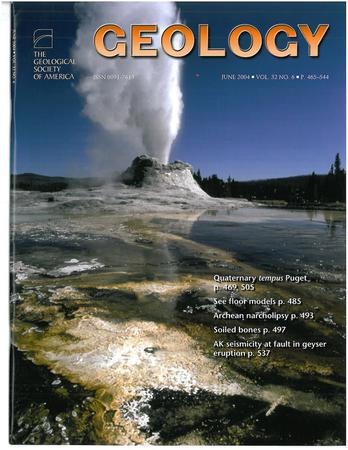发震带根部的流变不均匀性
IF 4.8
1区 地球科学
Q1 GEOLOGY
引用次数: 0
摘要
虽然流变非均质性被用来解释断层滑动行为的差异,但采用跨学科方法来捕捉其具体作用的案例研究仍然很少。在这项工作中,我们综合了地球物理、地质和实验室数据来解释流变非均质性如何影响发震带根部的地震活动。在2016-2017年意大利中部地震序列期间,在大地震之后,我们观察到与瞬态应力变化相关的地下室地震活动性加深。部分地震活动被组织成具有相似大小和波形的群集事件。对挖掘出的基底岩石的结构研究强调了一种非均质结构,由坚固的、富含石英的透镜体(长达200米)组成,周围是一个脆弱的、相互连接的富含层状硅酸盐的基质。模拟主冲击加载速率增加的室内实验表明,基体岩性经历了加速和自减速的地震蠕变,而透镜岩性则表现出动力不稳定。我们的研究结果表明,后主冲击加载率的增加有利于加速基体内的蠕变,从而促进透镜内以聚集地震活动形式的地震不稳定性。我们的发现强调了地震活动性与孕震带的构造和摩擦性质之间的密切联系。本文章由计算机程序翻译,如有差异,请以英文原文为准。
Rheological heterogeneities at the roots of the seismogenic zone
Although rheological heterogeneities are invoked to explain differences in fault-slip behavior, case studies where an interdisciplinary approach is adopted to capture their specific roles are still rare. In this work, we integrated geophysical, geological, and laboratory data to explain how rheological heterogeneities influence the earthquake activity at the roots of the seismogenic zone. During the 2016–2017 Central Italy sequence, following the major earthquakes, we observed a deepening of seismicity within the basement associated with a transient stress change. Part of this seismicity was organized in clusters of events, with similar sizes and waveforms. The structural study of exhumed basement rocks highlighted a heterogeneous fabric made of strong, quartz-rich lenses (up to 200 m) surrounded by a weak, interconnected phyllosilicate-rich matrix. Laboratory experiments simulating the main shock–induced increase in loading rate showed that the matrix lithology experienced an accelerating and self-decelerating aseismic creep, whereas the lens lithology showed dynamic instabilities. Our results suggest that the post–main shock loading rate increases favored accelerated creep within the matrix, which promoted, as a consequence, seismic instabilities within the lenses in the form of clustered seismicity. Our findings emphasize the strong connection between seismicity and the structural and frictional properties of the seismogenic zone.
求助全文
通过发布文献求助,成功后即可免费获取论文全文。
去求助
来源期刊

Geology
地学-地质学
CiteScore
10.00
自引率
3.40%
发文量
228
审稿时长
6.2 months
期刊介绍:
Published since 1973, Geology features rapid publication of about 23 refereed short (four-page) papers each month. Articles cover all earth-science disciplines and include new investigations and provocative topics. Professional geologists and university-level students in the earth sciences use this widely read journal to keep up with scientific research trends. The online forum section facilitates author-reader dialog. Includes color and occasional large-format illustrations on oversized loose inserts.
 求助内容:
求助内容: 应助结果提醒方式:
应助结果提醒方式:


